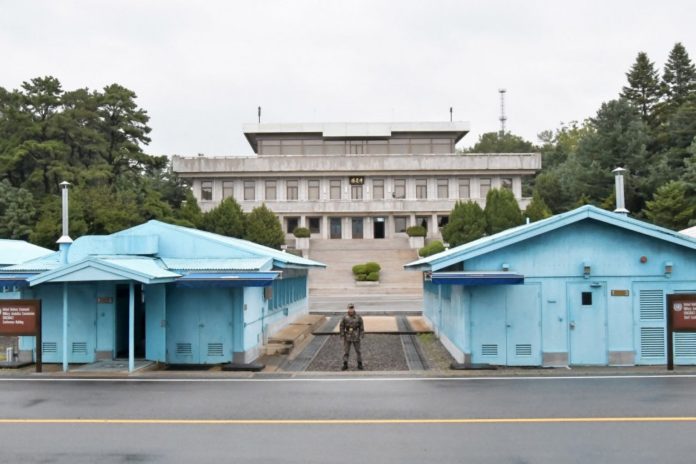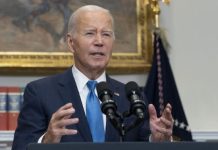
NEW YORK, Jan. 5 (UPI) — North Korea‘s provocations are reduced, but uncertainty remains as the regime stays shut and withholds more information about COVID-19 in the country.
U.S. Forces Korea Commander Gen. Robert Abrams said Monday during an online symposium hosted by the Institute for Corean-American Studies in Washington that he supports diplomacy and the “palpable” reductions in tensions on the peninsula. North Korea has not conducted additional nuclear tests since 2017.
But Pyongyang’s silence has not been accompanied by any change in its defense posture. According to Abrams, North Korea retains the world’s fourth or fifth-largest armed forces in the world.
The Korean People’s Army also remains concentrated within 37 miles of the Military Demarcation Line, which bisects the demilitarized zone.
Abrams’ comments about the North’s capabilities come at a time of transition. Ahead of U.S. President-elect Joe Biden‘s inauguration, concerns are mounting that North Korea could attempt a provocation to set a challenge for the incoming administration. Abrams did not rule out a major provocation.
“I say that we are not seeing any indicators that suggest that there would be a major provocation. But that’s today. That could change next week,” he said.
The U.S. commander also suggested the display of new North Korean weapons at the “very well rehearsed” October parade marking the 75th anniversary of the Workers’ Party requires more careful scrutiny.
“The physical act of putting together a parade with such precision is not a small feat,” Abrams said. “But we should not confuse parade precision with conventional capability. I don’t want to conflate those two things.”
Immediately after the parade, press reports called attention to North Korea’s new missiles and its “massive” intercontinental ballistic missile. Pyongyang previously claimed its ICBM could reach the continental United States.
Abrams said Monday observers should “not fall into the trap” of thinking the display proves the existence of fully capable systems.
“We actually don’t have people on the ground to touch, feel or see” the missiles, he said. “I would not be surprised some of the systems were mere facades or aspirations of [systems] they would like to fully develop.”
Supporting diplomacy
Siegfried Hecker, the U.S. nuclear scientist who visited North Korea’s Yongbyon nuclear facility in 2010, said at the symposium there is “immense concern” about North Korea’s development of weapons of mass destruction, after U.S.-North Korea nuclear talks broke down in 2019.
Hecker said Monday that North Korea could have as many as 45 nuclear weapons amid a “creeping advancement,” which has taken over after diplomacy failed to reach its goals.
Abrams said the U.S. military is in South Korea to support diplomacy and work closely with like-minded nations on “meaningful negotiations,” in addition to maintaining an “appropriate level of a credible deterrent.”
The U.S. commander declined to answer a question regarding the U.S military’s role in preventing North Korea’s nuclear threat from expanding, including any potential role in slowing the regime’s nuclear weapons development.
Abrams also did not address the status of burden-sharing talks between the United States and South Korea. Talks ended without an agreement in 2020 after the Trump administration demanded Seoul pay five-fold, or $5 billion annually, for the cost of keeping 28,500 U.S. troops on the peninsula.
But the U.S. military chief in Korea said “trust” prevails between the two militaries and that the two nations share a strong alliance that “extends far beyond the military domain.”
Earlier on Monday, Yonhap reported the two sides met to discuss a plan to pay South Korean military workers on U.S. military bases to avoid another furlough.
Abrams also defended the status of U.S.-South Korea joint exercises despite reports before and during the pandemic that some of the drills had been downsized or postponed.
The two sides recently trained for three weeks in a theater-level training exercise — a simulated training event — while reporting zero cases of COVID-19, he said.
“Since the beginning of the pandemic, five U.S. service members have tested positive,” Abrams said, referring to statistics that exclude new arrivals who were tested before entering quarantine.
“Five. It’s remarkable,” he said.





